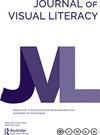策略性歧义作业:一种促进视觉传达中批判性与创造性思维的方法
Q1 Arts and Humanities
引用次数: 5
摘要
本研究首先假设视觉及相关素养不仅是培养学生学习视觉传达原则的必要框架,也是培养学生创造性解决问题和自主学习等21世纪技能的必要框架。我们专注于作业指示作为一个特殊的教学组成部分。与一步一步的指导相反,战略上模棱两可的任务促使学生决定满足项目标准和适合他们能力的最佳解决方案和行动过程。使用主题分析,我们分析了学生的反思,以询问学生对这些差异的感受以及学生如何表达他们的创作过程。在这两种情况下,学生都学习了视觉传达的基本组成部分。值得注意的是,战略上模棱两可的作业促使学生更加了解信息是如何构建的,并对自己的工作感到更加自豪,而明确的方向则促使学生更多地思考使用软件的技术细节。本文章由计算机程序翻译,如有差异,请以英文原文为准。
The strategically ambiguous assignment: an approach to promoting critical and creative thinking in visual communication
Abstract This study begins with the assumption that visual and related literacies are essential frameworks to foster not only students’ learning of visual communication principles, but also 21st century skills such as creative problem solving and self-directed learning. We focus on assignment directions as a particular instructional component. In contrast to step-by-step directions, strategically ambiguous assignments prompt students to determine the best solutions and course of actions that meet project criteria and suit their abilities. Using a thematic analysis, we analysed student reflections to inquire how students felt about these differences and how students articulated their creative process. In both cases, students learned essential components of visual communication. Notably, the strategically ambiguous assignment prompted students to be more aware of how messages are constructed and take greater pride in their work whereas the clear directions prompted more reflection about the technicalities of working with software.
求助全文
通过发布文献求助,成功后即可免费获取论文全文。
去求助
来源期刊

Journal of Visual Literacy
Arts and Humanities-Visual Arts and Performing Arts
CiteScore
1.30
自引率
0.00%
发文量
12
 求助内容:
求助内容: 应助结果提醒方式:
应助结果提醒方式:


